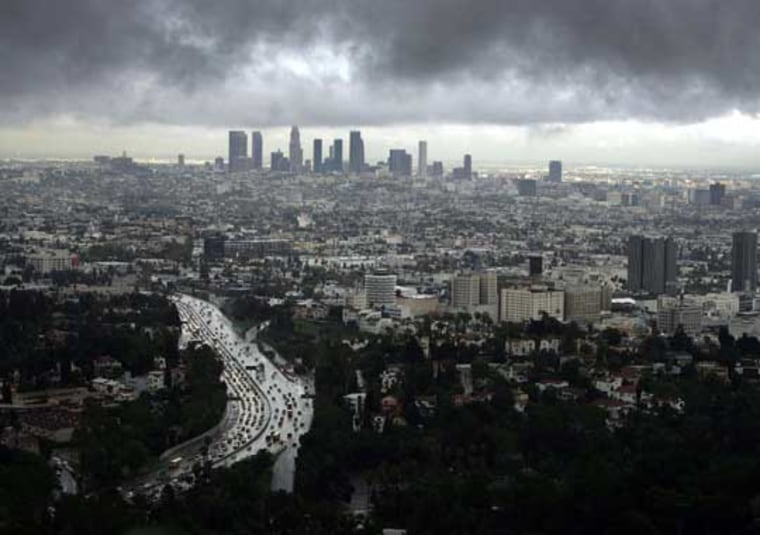It's a mystery of earthquakes that takes a deadly toll on humans: faults buried several miles deep in Earth's crust breed more damaging earthquakes than their surface counterparts. Over the years, unusually powerful shaking born from these "blind" faults has brought cities from California to Japan to their knees, without explanation. Until now.
Blind faults reside in rock layers perfectly suited to violent rupture, according to a new study. And when they strike, they focus explosions of energy toward the surface, jarring the nearby vicinity with a violence that can belie their modest size.
"When a rupture spreads in an earthquake, it's traveling almost like a sonic boom," explained Paul Somerville of URS Corporation in Pasadena, Calif. "Waves of energy are right on top of one another, traveling nearly 10,000 miles per hour; these are near shock wave conditions."
That's true of all quakes, but Somerville and a team of researchers found that buried faults focus their energy toward the surface and transmit it through brittle, rigid rocks that lie between five and 15 kilometers (3.1 to 9.3 miles) deep in Earth's crust. By comparison, faults at the surface fill with pulverized rock goo called "fault gouge" that dampens shaking.
The difference results in starkly different earthquakes. In a comparison of strong earthquakes between magnitude 6.5 and 7.5, the team found temblors originating on buried faults caused up to 60 percent stronger shaking than surface quakes of the similar magnitude.
In recent years, such quakes have caused enormous human suffering. Together, the 1989 Loma Prieta earthquake (magnitude 7.0) in the San Francisco Bay Area, the 1994 Northridge earthquake (magnitude 6.7) in southern California, and the 1995 Kobe earthquake (magnitude 6.9) accounted for hundreds of billions of dollars in damages, and thousands of fatalities.
None of the damaging faults ever reached the surface.
The disasters spurred scientists to wonder why a relatively moderate quake like Northridge would produce some of the strongest shaking ever recorded. The team's explanation sheds light on the causes, but the threat from such faults remains.
What's more, potentially catastrophic blind faults are still being discovered, including the Peunte Hills fault, which runs right under downtown Los Angeles. And from measuring the movements of Earth's crust, scientists know there must be many more they have yet to find.
The best that earthquake engineers can do for now is to incorporate this hard lesson of geology into hazard maps, and to assemble building codes that protect as much as possible from the hidden threat.
"The effect of blind faults on ground motions is in our new hazard maps, and it will work its way into building codes," Mark Peterson of the Unites States Geological Survey in Denver, Colo. said. "Our goal is to take all of this information and make the best estimates we can to build buildings that will withstand those ground motions."
More on earthquakes
